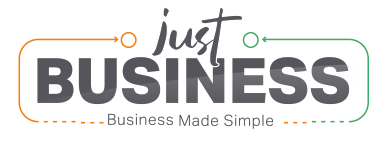Introduction: The New Tech Era Workplace Obstacles Employees Face
Recent years have changed how an employee interacts with their workplace on a basic level. Checkpoints or remote areas of monitoring systems have inflicted a digital workplace using advanced technologies. To enhance productivity levels, there have been significant investments made towards being able to monitor employees more efficiently. However, evidence is now suggesting that this might be counterproductive. It might even harm employees in ways that are worse than the benefits of increased efficiency. This article analyzes the concepts surrounding the surveillance of employees, delving into how supervision affects employee motivation, productivity, and overall wellness within the organization, along with the striking reality of the lack of oversight within the current process.
The Shift Towards Employer Focused Software Solutions
With the rise of the distributed workforce, there are now an overwhelming ~78% of managers who use some form of monitoring software to track productivity levels, and this number is expected to grow. Screenshots, mouse clicks, movement, and even web page accesses are captured by these tools. Every company puts these steps into action in the hope of monitoring how employees utilize their time, safeguarding their assets, and that work is being done. But the outcome does not ensure success; most won’t meet expectations set by these remote systems due to their own shallow measuring standards. The sad part is that these systems make the wrong data accessible, which in turn can mislead a company to believe that the wrong actions take place when in fact no productive action occurs beyond the desktop.
The Paradox of Productivity Explained
Unsurprisingly, employees seem to suffer the most when under surveillance, and tend to become less productive. A study found that the employees who were supervised spent, on average, an hour a day online for reasons other than work. These employees were compelled by peer and boss pressure to maintain their “visibility.” They felt the urge to look busy instead of concentrating on any deliverable results. The focus on measurable activity, such as typing or clicking, creates a metric without any requirement for creative thinking or problem solving, skills that are necessary for real achievement.
Behavioral Fallout: From Distrust to Defiance
Surveillance leads to much worse outcomes than just decreased productivity. It tends to foster hostility as well. There is ample evidence of negative backlash behavior within the workforce, such as purposely working slower than normal, taking non-approved breaks, and in some cases even stealing office supplies, which helps support productivity. Others will leave out directives or shift responsibility to others, something that illustrates a subtle form of resistance from being watched and distrusted. The term “silent resignation” illustrates how employees start to turn apathetic due to a lack of trust.
The Tech Industry’s Move Away From Surveillance
In one area, overreach is being challenged, and that is the technology sector. According to a Morning Consult survey, roughly 60% of technology workers say they would not accept a job that required audio or video monitoring. Such defiance reveals a deepening comprehension of the consequences surveillance has on a person’s autonomy and peace of mind. People want to work in places where trust, not constant monitoring, is the norm. As companies fight to attract talent, those who cling to these gross overreach practices stand to lose them to more enlightened competitors.
Using Technology In A Balanced Way: A Better Option
Instead of completely removing oversight, organizations can try to redesign it in a more equitable manner. For example, the adoption of remote work technology that enables rather than monitors can revolutionize an organization’s operations. Supervision that works with the optimization of freedom, like Controlio software, helps to achieve this objective.Time tracking software has also been shown to help reinforce goal alignment without harming employee morale.
Revamping Success Outside of Metrics
Elementary monitoring overlooks the most significant aspect—the results. They focus instead on hours logged and pages visited. Real productivity is measured in the completion of projects, problem solving, and innovation. There is a need for companies to change their approach by using results as the core measurements, while also creating an environment where employees are appreciated for what they offer and not the number of hours spent on the computer. Employees can be given the freedom to self-govern their time, which is often untapped due to the micromanagement style of many leaders and supervisors.
The Human Component: Employees First
In essence, the problem of monitoring is fundamentally a question of relationships. Putting too much control over anything shows too much distrust, and this causes a major rift between the employer and the employee. Allowing autonomy, on the other hand, means trust to build conviction. Employees who feel valued are most likely to exert discretionary effort out of pure motivation instead of fear of being caught doing nothing. Organizations that adopt this approach are likely to enjoy a higher retention rate and satisfaction level, which proves that trust goes a long way.
A Warning Story for Companies
Overmonitoring comes with its own costs that often outweigh any benefits, which in this case would be increased productivity. Tracking employee performance too closely rarely leads to positive outcomes and often results in lost time and creativity. Organizations that continue using forceful policies may end up reducing their productivity and goodwill. Finding that sweet spot is the difficult part—using technology as help instead of control.
Conclusion: There is Always a Different Direction Ahead
As the workplace adapts, different management styles need to emerge. The temptation of having ultimate visibility is dangerous, as it can always backfire. Companies that shift from strict posting rules toward more collaborative technologies like the Controlio tool can achieve a lot. We need to remember that the future is in the hands of those who trade trust, results, and genuine social interaction for metrics and numbers. In some cases, the less management imposed, the more success achieved.

